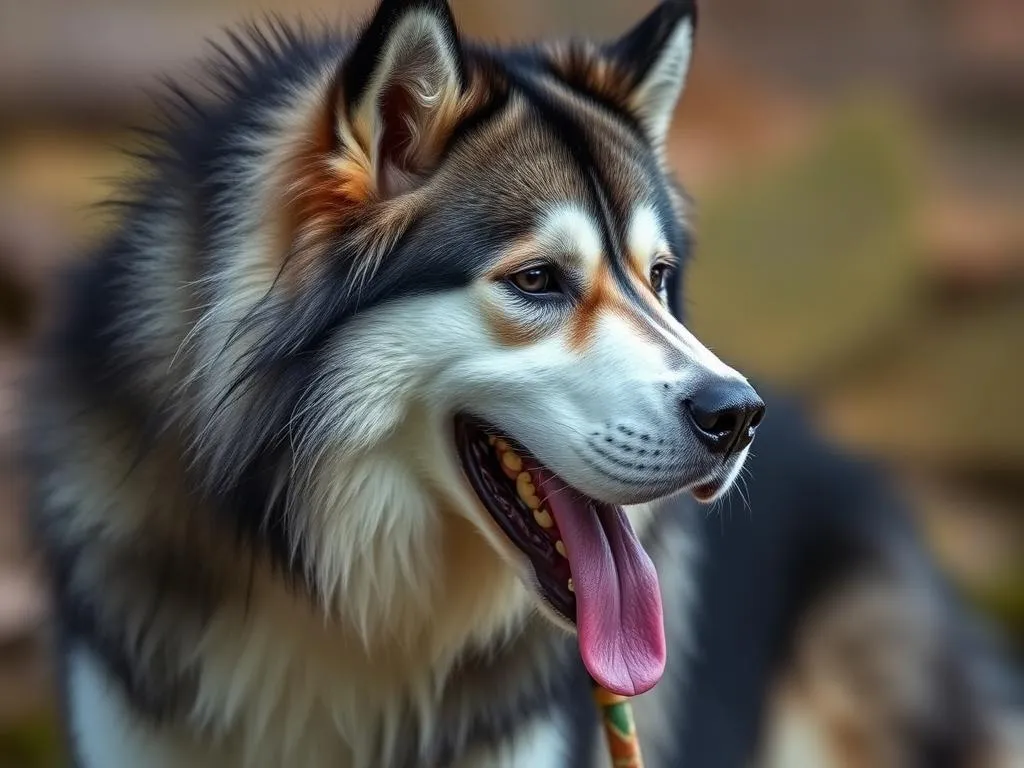
The Alaskan Malamute is a majestic and powerful breed that has captured the hearts of many dog lovers around the world. Known for their strength and endurance, these dogs have a rich history and impressive physical characteristics. Understanding the facts about the Alaskan Malamute is crucial for anyone considering bringing one into their home. This article delves into the fascinating details of this breed, covering their history, physical traits, temperament, health, care requirements, and some fun facts that showcase their unique personality.
History of the Alaskan Malamute
Origins
The Alaskan Malamute traces its roots back to the Arctic regions, where it was developed by the Mahlemut tribe, a native Inuit group. These early inhabitants relied on the breed for companionship and assistance in hunting and transportation. The Malamute’s ability to pull heavy sleds made them invaluable to their human counterparts, leading to their prominence in the harsh Arctic environment.
Evolution
Over time, the Alaskan Malamute evolved to adapt to the extreme conditions of the Arctic. Their physical characteristics, such as a thick double coat and strong, muscular build, allowed them to thrive in sub-zero temperatures. Originally bred for hauling heavy loads, their endurance and strength were essential during long treks across the snow. As transportation methods changed, the role of the Alaskan Malamute shifted, but they remained popular as companion animals and working dogs.
Recognition
The Alaskan Malamute gained formal recognition in the early 20th century. The American Kennel Club (AKC) recognized the breed in 1935, which helped solidify its status as a distinct breed. Today, the Malamute is celebrated as one of the most beloved dog breeds, often ranking high in popularity among large breeds.
Physical Characteristics
Size and Weight
The Alaskan Malamute is a large and powerful breed. Adult males typically weigh between 85 to 100 pounds, while females range from 75 to 85 pounds. In terms of height, males usually stand about 25 to 28 inches tall at the shoulder, while females measure between 23 to 26 inches. These size differences contribute to the distinctive appearance of the breed, with males typically being more robust than females.
Coat and Color
One of the most striking features of the Alaskan Malamute is its thick, double coat. This fur serves as insulation against the cold and is water-resistant, making it ideal for Arctic conditions. The outer coat is long and coarse, while the undercoat is soft and dense. Common color patterns include shades of gray, black, sable, and red, often accompanied by white markings on the face, chest, and feet.
Distinctive Features
The Alaskan Malamute has several distinctive physical traits that contribute to its unique look. Their ears are triangular and erect, giving them an alert expression. The eyes are often almond-shaped, ranging from brown to blue, and their tails are bushy and carried over the back, resembling a plume. These features not only add to their aesthetic appeal but also play a role in their functionality as working dogs in cold climates.
Temperament and Behavior
General Temperament
The Alaskan Malamute is known for its friendly and sociable nature. They are loyal, affectionate, and form strong bonds with their families. While they can be independent and sometimes stubborn, they are also eager to please, making them trainable with the right approach. Compared to similar breeds, such as the Siberian Husky, Malamutes tend to be more reserved and less prone to vocalization.
Socialization Needs
Early socialization is essential for the Alaskan Malamute to develop into a well-adjusted adult dog. They generally get along well with children and other pets when properly introduced and socialized from a young age. However, due to their strong prey drive, caution should be exercised when introducing them to smaller animals.
Exercise Requirements
The Alaskan Malamute is an active breed that requires plenty of exercise to remain healthy and happy. Daily walks, playtime, and mental stimulation are essential to prevent boredom and destructive behaviors. Engaging activities like sledding, hiking, or even agility training can help satisfy their energetic nature. A good rule of thumb is to provide at least one hour of vigorous exercise each day.
Health Considerations
Common Health Issues
Like many breeds, the Alaskan Malamute is prone to certain health issues. Common concerns include hip dysplasia, elbow dysplasia, and certain genetic conditions such as hypothyroidism. Regular veterinary check-ups are crucial for early detection and management of these health issues. Responsible breeding practices can also help minimize the risk of inherited health problems.
Lifespan
The average lifespan of an Alaskan Malamute ranges from 10 to 14 years. Factors such as genetics, diet, exercise, and overall care play significant roles in determining a dog’s longevity. Providing a healthy lifestyle and regular veterinary care can help maximize their lifespan.
Nutrition
Proper nutrition is vital for the health of an Alaskan Malamute. They require a balanced diet that meets their energy needs, particularly if they are active or working dogs. High-quality dog food formulated for large breeds is recommended, with a focus on protein-rich ingredients to support their muscular build. It’s essential to monitor their weight, as Malamutes can be prone to obesity if overfed or under-exercised.
Training and Care
Basic Training Tips
Training is a critical aspect of owning an Alaskan Malamute. They respond well to positive reinforcement techniques, which encourage good behavior without the use of harsh methods. Consistency and patience are key, as Malamutes can be stubborn. Basic obedience training should be started early, focusing on commands such as sit, stay, and come. Socialization classes can also benefit their development.
Grooming Needs
The Alaskan Malamute has a thick double coat that requires regular grooming, especially during shedding seasons. Brushing at least once a week is recommended to prevent matting and reduce loose fur around the house. They typically shed heavily twice a year, during which more frequent grooming may be necessary to manage the amount of hair. Bathing should be done as needed, but over-bathing can strip the coat of its natural oils.
Living Environment
An ideal living environment for an Alaskan Malamute includes a spacious yard where they can play and exercise. They thrive in homes with ample outdoor space, but they can adapt to indoor living if given enough exercise. Malamutes are not suited to living in small apartments without regular outdoor access, as their energy levels and exercise needs are quite high.
Fun Facts About Alaskan Malamutes
Unique Traits
The Alaskan Malamute is known for its uniqueness in several ways. They have a strong sense of smell, which makes them excellent at tracking. Additionally, they are known for their affectionate nature, often being described as “gentle giants” due to their size and demeanor. Their playful attitude and love for family make them wonderful companions.
Pop Culture References
The Alaskan Malamute has made appearances in various movies and media, often portrayed as heroic and loyal companions. Films such as “Eight Below” and “Togo” feature these magnificent dogs in prominent roles, showcasing their strength and intelligence. Their striking appearance has also made them favorites in advertisements and television shows.
Famous Malamutes
Several notable Alaskan Malamutes have gained fame through social media and viral videos. These dogs often showcase their playful antics, strength, and intelligence, captivating audiences globally. Their popularity continues to grow as more people discover the joys of owning this remarkable breed.
Conclusion
The Alaskan Malamute is a breed rich in history, characterized by its strength, loyalty, and friendly nature. Understanding their unique traits, health considerations, and care needs is vital for anyone considering welcoming one into their home. With the right environment, training, and commitment, an Alaskan Malamute can be a loving and devoted companion for many years. Whether as a working dog or a family pet, the Malamute’s charm and personality are sure to leave a lasting impression.









